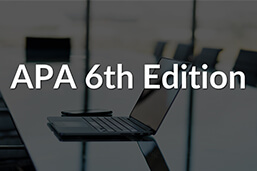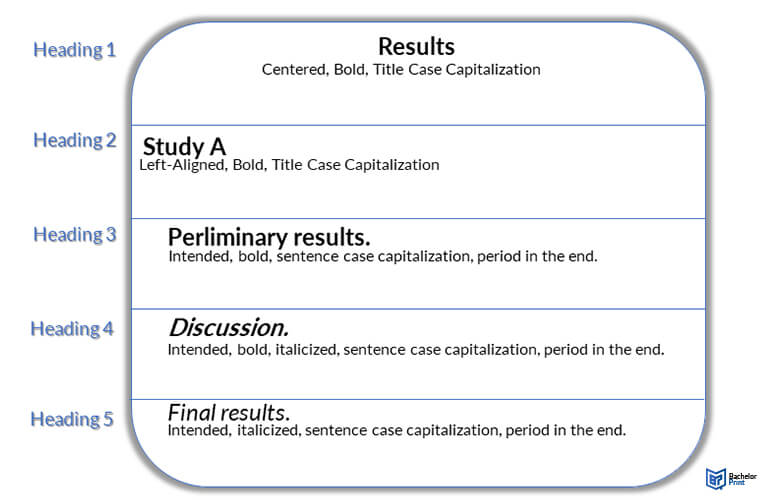
The APA style is based on an author-date formatted guide for crediting and referring to sources in papers and other projects. Although psychologists have historically made up APA’s most extensive user base, students, and authors in other professions have increasingly adopted the style in recent years. Consequently, the APA 6th edition was written with a broader audience in mind. The revised APA 6th edition caters to this wider readership. This article outlines the key sections of academic papers in accordance with the APA 6th edition format.
Definition: APA 6th Edition
The American Psychological Association (APA) released the 6th edition of its Publication Manual in 2009.
In addition to APA citation rules, there are also guidelines for the structure of academic essays and papers.They are commonly utilized by professionals, students, and researchers.
Basic APA 6th edition format standards are as follows:
- Employ 12-point Times New Roman
- Set page margins to 1 inch
- Use double-line space.
- Incorporate a running head on each page.
- Half-inch indent for each new paragraph
Headings in APA 6th edition
Your document makes use of a variety of heading levels. The levels ranging from one to five aid in the document structure. Chapter titles, like “Methods” and “Results,” are placed under a major heading, or heading 1. Subheadings utilize heading levels two through five. Each level of heading is formatted uniquely.
These are the guidelines for APA 6th edition headings:
- Heading 1: Centered, Bold, Title Case Capitalization
- Heading 2: Left-Aligned, Bold, Title Case Capitalization
- Heading 3: Indented, bold, Sentence case capitalization, a final full stop. The body of the text begins immediately following the full stop.
- Heading 4: Indented, bold, italics, sentence case capitalization, and a final full stop. The body of the text begins immediately following the full stop.
- Heading 5: Indented, italics, sentence case capitalization, and a final full stop. The body of the text begins immediately following the full stop.
- Title case capitalization: Capitalize the first, last, and headmaster words.
- Sentence case capitalization: Capitalize only the first word and any proper nouns.
Note: APA style does not require a table of contents, but if you wish to include one, all headings must be formatted as plain text with an extra indent for each level.

Running head in APA 6th edition
Include the title and page number in the header of each page. If the title of your paper is longer than 50 characters, use a truncated version as the running head. The page number must appear in the upper right-hand corner. The words “Running head:” precede the APA running head on the title page.
Title page in APA 6th edition
Your work begins with the APA title page, commonly known as the cover page. The standard requirements for formatting font and margins apply.
In addition, an APA 6th edition style title page includes:
- Running head including page number
- Full paper title (in title case)
- Author name(s), without titles and degrees
- Institutional affiliation
There are precise standards in APA 6th edition format for including multiple authors or institutional affiliations on the title page.
Abstract in APA 6th edition
An abstract in APA 6th edition format is a one-paragraph (250-word) overview of your paper. It introduces the paper’s purpose or issue statement and provides information on the methodology, research results, and conclusions.
Although most APA formatting principles apply, the APA abstract has additional requirements. The abstract begins with the centred title “Abstract.” In contrast to standard APA headers, there is no formatting. Unlike conventional paragraphs, the opening line of this paragraph is not indented.
Relevant keywords are inserted after the abstract. These keywords boost your paper’s discoverability in databases. Indent the keyword line and begin with the italicized phrase “Keyword:” followed by the keywords.
In-Text references in APA 6th edition
Citations in APA format includes parenthetical citation in the text (APA 6th edition in-text citations) and the complete reference in the reference list. Specific citation requirements apply to each website, journal article, book, and other sources.
Reference Page in APA 6th Edition
All sources cited in the text are given on the APA 6th edition reference page, often known as the reference list. Citations vary depending on the type of source. In addition to the references themselves, the reference page as a whole must adhere to particular APA formatting rules.
References in the text must also appear in the references list in alphabetical order by author’s last name, except for personal correspondence, which should only be cited in the text.
The APA 6th edition gives an overview of electronic sources and how to cite them, specifically URLs and DOIs, as electronic publishing has become the norm in research.
URLs, often known as web addresses, are used to locate content on the Internet. The 5th version stipulated that citations of electronic sources should include the URL of the article or document. However, URLs are susceptible to “breaking” or deletion, so publishers have begun to include DOIs with articles to address the instability of URLs.
APA 5th edition vs. APA 6th edition
Below are the major differences between APA 5th and APA 6th edition:
| Table: | 5th Edition 6th edition |
|
Multiple Authors |
In the reference list, put "et al." after the sixth author when there are 7+ authors. Use "..." instead, replacing all between the sixth author and the last author. |
| Retrieval Date | Date of retrieval before the URL Unless the source is anticipated to undergo frequent changes, do not include the retrieval date. |
| Database Names | Include database names in journal citations. Do not include database information; use the journal's homepage URL instead. |
| DOIs | It doesn't emphasize DOI use. The sixth edition of the APA emphasizes the inclusion of DOIs in citations as the best approach to identifying online sources. |
| Cities | Do not include a state or country if the city is known for its publishing industry. Include a country (if the city is not in the United States) or a two-letter state code (if the city is in the US). |
FAQs
In APA 6th, if there were more than seven authors on a given reference, only the top seven would be included, with et al. following. Up to twenty authors can be listed in APA 7th format.
After the initial citation, sources with three, four, or five authors are shortened. From the second citation on, only the first author’s name should be included, followed by “et al.” (“and others”). Sources with six or more authors are consistently abbreviated, including the initial citation.
Unlike APA 5th, which requires that the date of retrieval be provided in all online citations, APA 6th edition suggests including it only if the source material is likely to change over time.
